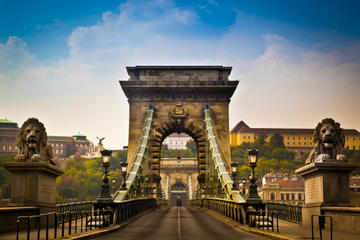Chain Bridge (Széchenyi Lanchid)
TIME : 2016/2/22 11:27:36

Chain Bridge (Széchenyi Lanchid)
Budapest’s Chain Bridge was the city’s first – and is still its most famous – crossing of the Danube, connecting Baroque Buda on the western river bank with the wide boulevards of Pest on the east. Opened in 1849, the bridge is 375 meters long and 16 meters wide; it is made of made of stone slabs and suspended in place by two massive linked iron chains. Originally a toll bridge, it was designed by English engineer Alan Clark, who also had a hand in Hammersmith Bridge across the River Thames in London. The stone lions guarding both ends of the Chain Bridge were carved by János Marschalkó and added in 1852.
From the Buda side of the Chain Bridge a road tunnel leads northwards underneath Castle Hill; as the bridge united the east and west sides of the city it was indirectly responsible for Budapest’s rapid flowering as a major metropolis in the late 19th century. Continuing to play a large part in the city’s history, the bridge was blown up by the Nazis in World War II to halt the progress of Russian troops across the Danube. It was one of the first structures in Budapest to be rebuilt after the war and today it remains a potent symbol of the city and Hungary’s independence; the bridge was the scene of fierce demonstrations during the 1989 protests against Communist occupation. Walking across it at night gives views of Buda Castle and Parliament House gloriously floodlit across the river.
Practical Info
Open 24/7, the Chain Bridge is open to both cars and pedestrians.
